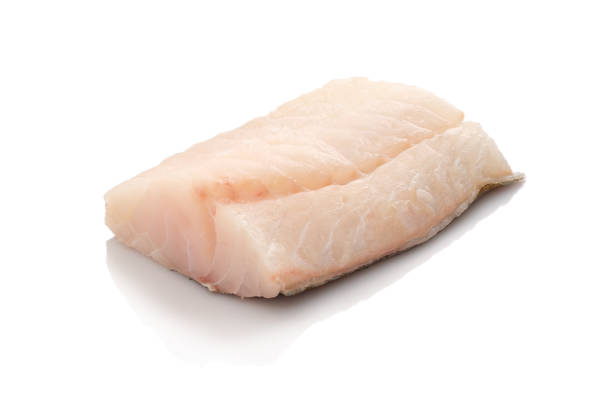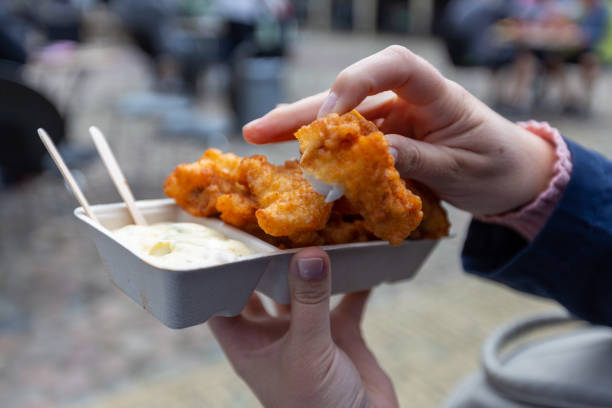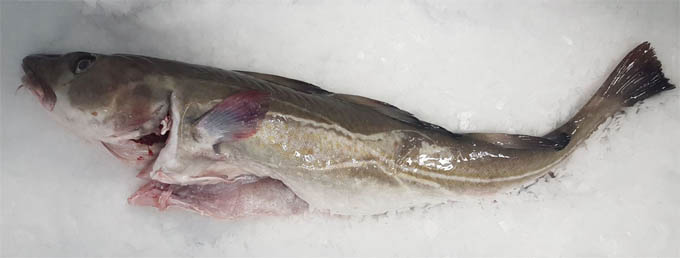Nederlands
English
Deutsch
Français
There aren’t many fish varieties as popular as cod. This is partly because cod can be processed and eaten in countless ways. Cod has a delicate flavour, and an optimal result can be quickly achieved with only a short cooking time. As cod comes in all shapes and sizes, it can be baked, stewed or steamed in the oven or microwave.
As a buyer, you are not only looking for quality fish, but you also want to know how this fish fares in the market. This article explains everything you need to know about cod. Which cod is best used for which products, and what is essential for you as a buyer to know?
Cod is perhaps one of the best-selling fish varieties in the Netherlands. There are several reasons why cod is so popular. This fish has a neutral flavour, which means it can be combined with almost all vegetables and thus be used in countless recipes. Cod is also easy to cut and prepare. That is why this fish is often used in ready-made products, such as fishcakes, cod burgers or cod croquettes.
For kids, cod is a perfect fish to try. Not only because the fish is easy to process because of its neutral taste, but also because cod is very good for you. Cod contains hardly any fat and a lot of high-quality proteins. This makes the fish tasty, easily digestible and healthy.
Cod is not a cheap fish variety, but it is certainly not in the same price range as salmon, tuna or sole, for example. If you look at the opposite end of the price scale, at pangasius and tilapia, cod lies somewhere in between. If you consider the way the fish is farmed, the fishing method and/or the fat percentage of the fish, then cod is definitely the healthiest choice.
In short, cod is a popular fish that is virtually impossible not to like. Cod is a real winner thanks to its relatively low price, neutral taste, the many ways of preparing it and its ease of preparation.The different names for cod
Because cod is such a popular fish, it can be found in every supermarket or fishmonger. A layperson may not recognise cod immediately, as the fish is often prepared and processed in different ways before being displayed and sold.
Below we will discuss in detail the various names and uses of cod as a consumer fish.
Fresh cod fillets can be found in the refrigerated section of every supermarket and in the display case of every fishmonger. Cod is rarely sold as a whole fish and is almost always filleted and sliced. Cod fillet is literally available in all shapes and sizes.

For example, you often see the fish in the display as ‘large cod fillets’, which are the best, thickest pieces of cod, or as ‘small cod’ and ‘cod tails’. Some fishmongers also sell cod cheeks. Cod cheeks have a distinctive texture and taste.
In the past, these tender pieces of cod cheeks were processed into ‘kibbeling’ (small, deep-fried pieces of fish). Due to the immense popularity of kibbeling and the price increase of the cod, they gradually switched to processing the belly pieces of the cod into kibbeling.
In the Netherlands, a serving of kibbeling is the most popular way of consuming cod fish today. Hot kibbeling is sold at every fishmonger and fish stall. To make kibbeling, cod is cut into pieces, seasoned with special kibbeling spices, dipped in a light batter of milk and flour, and fried in hot oil. A serving of kibbeling is complemented by a bit of tartar sauce, called ravigottesauce or remouladesauce… ready to be enjoyed!

Because cod can be a pricey fish nowadays, especially in times of scarcity, leftovers are often used to make kibbeling. Leftovers are the pieces of cod left after portioning: they are not sellable as they are too small and do not look enticing enough. They remain after cutting and filleting the larger cod fillets. Frozen cod fillet strips are also often cut up into pieces for kibbeling.
Another famous cod product in the Netherlands is the ‘lekkerbek’. The lekkerbek is made from the thinner tailpieces of cod fillets. These small (fried and usually 1.5 to 2 ounces) codpieces are filleted on the skin. Small skinned cod fillets are also known as ‘gul‘ or ‘tor’.
After filleting, the skinned cod fillets are usually lightly salted. They are then dipped in the same batter as the kibbeling and fried in hot oil. Lekkerbekjes are also usually consumed with tartar sauce. This cold white fish sauce consists of mayonnaise and herbs (mainly parsley), chopped onions and crushed gherkins.
When you take a good look at the popular and tasty Dutch lekkerbekje, you can see the similarities with the piece of fish fillet in the world-famous British fish and chips. The phenomenon of a ‘lekkerbekje’ is not only known to the Dutch; cod is eaten this way all over the world.
In England, cod is also used for the famous fish and chips. However, cod is also regularly replaced by haddock fillet, a fish variety that is very similar to cod.
In the Netherlands, a cheaper alternative to cod is often chosen nowadays. Various other white fish varieties are transformed into tasty lekkerbekjes and kibbeling, such as haddock, whiting or hake fillet. However, of all these fish species, cod is by far the most delicious and most exclusive.
Cod is a fish that is used for everything. In the Netherlands, cod is usually bought fresh or fried as kibbeling or lekkerbek, as we have already discussed in detail. However, the Netherlands is not the only country where cod is very popular.
Stockfish – Cod dried on sticks
Cod can also be processed into stockfish. This is done by hanging the wet cleaned cod fillets in the open air on sticks (hence the Dutch name ‘stick fish’) and letting them dry out. After a few months, the pieces of fish look like dry pieces of wood and can be stored for up to a year.
Dried cod is especially well-known in countries around the Mediterranean Sea and in Africa.
‘Klipvis’ – Cod dried on rocks
As the title indicates, Klipvis is also dried cod. However, the preparation method is slightly different: stockfish is cod dried using sticks, but when processed into ‘klipvis’ (literally ‘cliff-fish’), the cod is laid out on the rocks to dry. Nowadays, this drying process is done by machine. Another difference between the two types of dried cod is that ‘klipvis’ is salted.
Klipvis is mainly eaten in Portugal and Brazil but is also found in Spanish and Surinamese cuisine. Another name for klipvis is ‘bakkeljauw’ (salted cod).
Cod roe and cod liver
Even cod roe is for sale and used in pasta dishes or salads. Cod liver is another popular product. Just like haddock liver, it is often sold in tins marinated in oil. Canned cod liver, like fresh cod, does not taste very fishy and is also super healthy; packed with vitamins A, D and Omega-3 fatty acids. Wild or farmed cod?
Cod can certainly be called a sustainable fish because nothing of this fish goes to waste. Unfortunately, there are no actual sustainable cod farming methods. This is because cod is a fish species with a very high primary energy consumption. This means that more than 4 kg of wild fish is needed to farm 1 kg of cod. That simply makes cod farming too expensive.
The cod you buy is, therefore, almost always wild cod. Cod is found in the Atlantic Ocean, the Arctic Ocean, the Baltic Sea and the North Sea. The fish is caught throughout the year. The most important places for cod fishing are the Lofoten and the Doggersbank. The Lofoten are a group of islands in the north of Norway. Doggersbank is a shallow area in the North Sea, east of northern England.
Cod is a cold-water fish and lives at depths of 20 to 600 metres close to the seabed. The waters surrounding Norway are much deeper. The cod that is caught here has a somewhat darker green colour; the fillets of this fish are more ‘glassy’ than, for example, Dutch cod.

This is due to both the depth of the water and the diet of the fish. Whereas cod on the Norwegian seabed mainly feed on mussels and squid, cod in the North Sea mainly eat shrimp. Thanks to this diet, Dutch cod tastes more tender and creamier than Norwegian cod. The fish along our coasts also have a lighter colour.
Skrei
The cod caught around the Lofoten during the winter months is also known as Skrei (migrating cod). These spawning cod eat less and different food during migration and spawning. As a result, its flesh becomes whiter and firmer. Skrei is only available for a few weeks per year.
As a wholesaler of cod, Mooijer-Volendam sets high standards for its quality. Our customers can rely on AAA product quality of, among other things, our various frozen cod products. The same naturally applies to our fresh cod fillets.
Would you also like to buy the tastiest cod products? Mooijer-Volendam distinguishes itself as a cod wholesaler by supplying absolute top-quality cod. Once customers get used to the taste of Mooijer-Volendam, they rarely want to try anything else.
That is why more and more customers are finding their way to us as a wholesaler for the hospitality industry or as a wholesaler for fishmongers, specialist shops and large retailers.